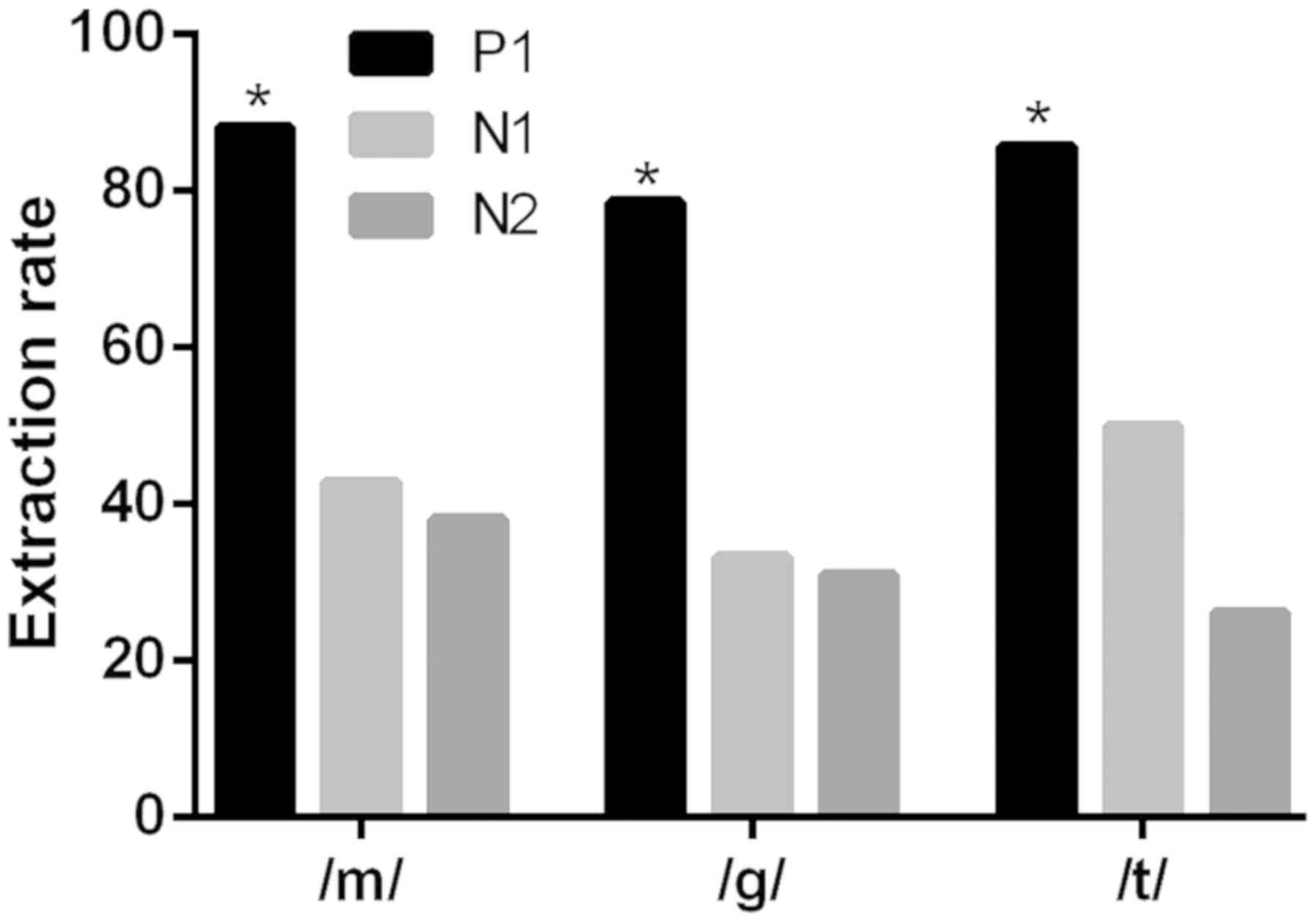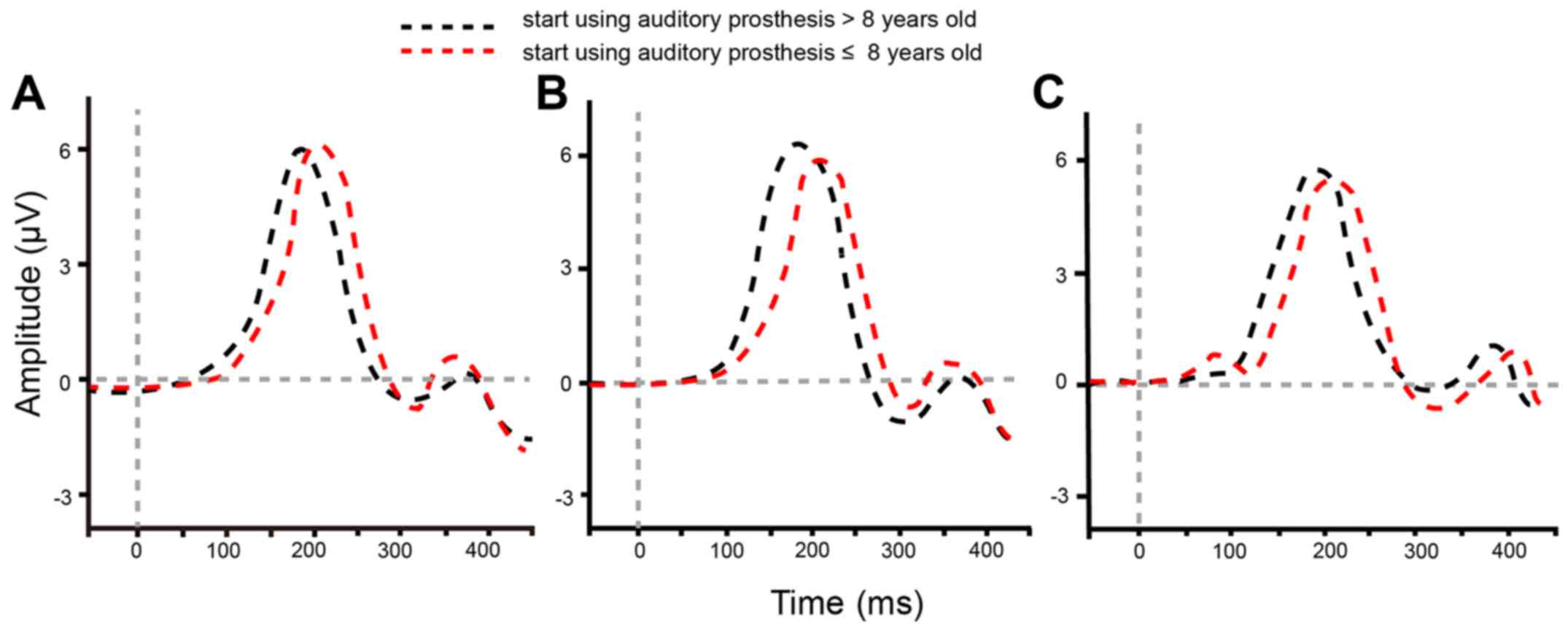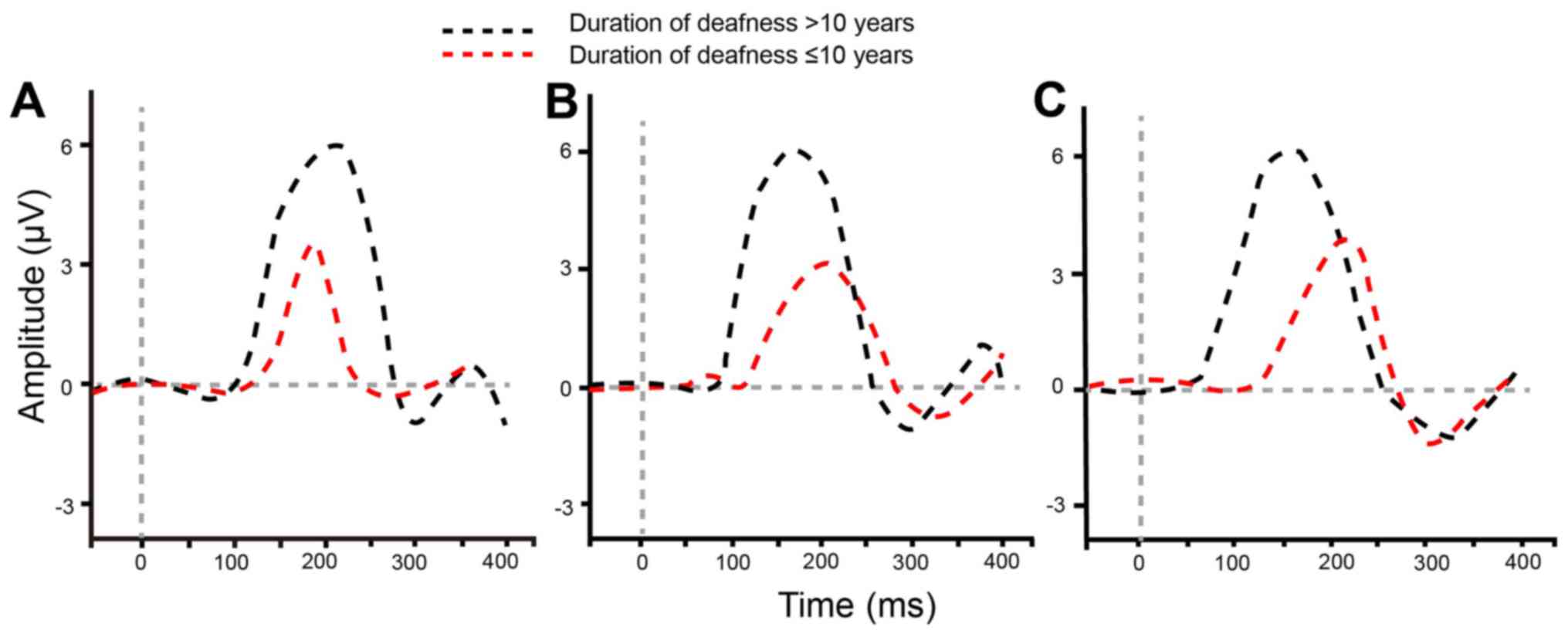|
1
|
Richardson GP, de Monvel JB and Petit C:
How the genetics of deafness illuminates auditory physiology. Annu
Rev Physiol. 73:311–334. 2011. View Article : Google Scholar : PubMed/NCBI
|
|
2
|
Vivero RJ, Fan K, Angeli S, Balkany TJ and
Liu XZ: Cochlear implantation in common forms of genetic deafness.
Int J Pediatr Otorhinolaryngol. 74:1107–1112. 2010. View Article : Google Scholar : PubMed/NCBI
|
|
3
|
Miao W, Li J, Tang M, Xian J, Li W, Liu Z,
Liu S, Sabel BA, Wang Z and He H: Altered white matter integrity in
adolescents with prelingual deafness: A high-resolution tract-based
spatial statistics imaging study. AJNR Am J Neuroradiol.
34:1264–1270. 2013. View Article : Google Scholar : PubMed/NCBI
|
|
4
|
Kaplan DM and Puterman M: Pediatric
cochlear implants in prelingual deafness: Medium and long-term
outcomes. Isr Med Assoc J. 12:107–109. 2010.PubMed/NCBI
|
|
5
|
Kral A and O'Donoghue GM: Profound
deafness in childhood. N Engl J Med. 363:1438–1450. 2010.
View Article : Google Scholar : PubMed/NCBI
|
|
6
|
Fu S, Dong J, Wang C and Chen G: Parental
attitudes toward genetic testing for prelingual deafness in China.
Int J Pediatr Otorhinolaryngol. 74:1122–1125. 2010. View Article : Google Scholar : PubMed/NCBI
|
|
7
|
Vlastarakos PV, Proikas K,
Papacharalampous G, Exadaktylou I, Mochloulis G and Nikolopoulos
TP: Cochlear implantation under the first year of age-the outcomes.
A critical systematic review and meta-analysis. Int J Pediatr
Otorhinolaryngol. 74:119–126. 2010. View Article : Google Scholar : PubMed/NCBI
|
|
8
|
Teoh SW, Pisoni DB and Miyamoto RT:
Cochlear implantation in adults with prelingual deafness. Part II.
Underlying constraints that affect audiological outcomes.
Laryngoscope. 114:1714–1719. 2004. View Article : Google Scholar : PubMed/NCBI
|
|
9
|
Zheng Y, Soli SD, Wang K, Meng J, Meng Z,
Xu K and Tao Y: A normative study of early prelingual auditory
development. Audiol Neurootol. 14:214–222. 2009. View Article : Google Scholar : PubMed/NCBI
|
|
10
|
Jalilvand H, Pourbakht A and Jalaee S: The
relationship between hearing aid frequency response and acceptable
noise level in patients with sensorineural hearing loss. Adv Biomed
Res. 4:2562015. View Article : Google Scholar : PubMed/NCBI
|
|
11
|
Van Dun B, Carter L and Dillon H:
Sensitivity of cortical auditory evoked potential detection for
hearing-impaired infants in response to short speech sounds. Audiol
Res. 2:e132012. View Article : Google Scholar : PubMed/NCBI
|
|
12
|
Durante AS, Wieselberg MB, Carvalho S,
Costa N, Pucci B, Gudayol N and Almeida KD: Cortical auditory
evoked potential: Evaluation of speech detection in adult hearing
aid users. Codas. 26:367–373. 2014.(In English, Portuguese).
View Article : Google Scholar : PubMed/NCBI
|
|
13
|
Campbell JD, Cardon G and Sharma A:
Clinical application of the P1 cortical auditory evoked potential
biomarker in children with sensorineural hearing loss and auditory
neuropathy spectrum disorder. Semin Hear. 32:147–155. 2011.
View Article : Google Scholar : PubMed/NCBI
|
|
14
|
Thabet MT and Said NM: Cortical auditory
evoked potential (P1): A potential objective indicator for auditory
rehabilitation outcome. Int J Pediatr Otorhinolaryngol.
76:1712–1718. 2012. View Article : Google Scholar : PubMed/NCBI
|
|
15
|
Sharma A, Campbell J and Cardon G:
Developmental and cross-modal plasticity in deafness: Evidence from
the P1 and N1 event related potentials in cochlear implanted
children. Int J Psychophysiol. 95:135–144. 2015. View Article : Google Scholar : PubMed/NCBI
|
|
16
|
Wagner M, Roychoudhury A, Campanelli L,
Shafer VL, Martin B and Steinschneider M: Representation of
spectro-temporal features of spoken words within the P1-N1-P2 and
T-complex of the auditory evoked potentials (AEP). Neurosci Lett.
614:119–126. 2016. View Article : Google Scholar : PubMed/NCBI
|
|
17
|
Elangovan S and Stuart A: A
cross-linguistic examination of cortical auditory evoked potentials
for a categorical voicing contrast. Neurosci Lett. 490:140–144.
2011. View Article : Google Scholar : PubMed/NCBI
|
|
18
|
Lina-Granade G, Truy E, Porot M, Collet L
and Disant F: Hearing impairment in children: Early diagnosis is
essential. Arch Pediatr. 7:991–1000. 2000.(In French). View Article : Google Scholar : PubMed/NCBI
|
|
19
|
Guo S, Li H, Chen B and Dai C: Study of
categories of auditory performance and speech intelligibility
rating of post-lingual cochlear implantes. Lin Chung Er Bi Yan Hou
Tou Jing Wai Ke Za Zhi. 28:955–957, 960. 2014.(In Chinese).
PubMed/NCBI
|
|
20
|
Gilley PM, Sharma A, Dorman M and Martin
K: Developmental changes in refractoriness of the cortical auditory
evoked potential. Clin Neurophysiol. 116:648–657. 2005. View Article : Google Scholar : PubMed/NCBI
|
|
21
|
Alcantara JL, Moore BC, Kühnel V and
Launer S: Evaluation of the noise reduction system in a commercial
digital hearing aid. Int J Audiol. 42:34–42. 2003. View Article : Google Scholar : PubMed/NCBI
|
|
22
|
Zhang VW, Ching TY, Van Buynder P, Hou S,
Flynn C, Burns L, McGhie K and Wong AO: Aided cortical response,
speech intelligibility, consonant perception and functional
performance of young children using conventional amplification or
nonlinear frequency compression. Int J Pediatr Otorhinolaryngol.
78:1692–1700. 2014. View Article : Google Scholar : PubMed/NCBI
|
|
23
|
Lonka E, Hasan M and Komulainen E: Spoken
language skills and educational placement in Finnish children with
cochlear implants. Folia Phoniatr Logop. 63:296–304. 2011.
View Article : Google Scholar : PubMed/NCBI
|
|
24
|
Russo N, Zecker S, Trommer B, Chen J and
Kraus N: Effects of background noise on cortical encoding of speech
in autism spectrum disorders. J Autism Dev Disord. 39:1185–1196.
2009. View Article : Google Scholar : PubMed/NCBI
|
|
25
|
Sharma A, Martin K, Roland P, Bauer P,
Sweeney MH, Gilley P and Dorman M: P1 latency as a biomarker for
central auditory development in children with hearing impairment. J
Am Acad Audiol. 16:564–573. 2005. View Article : Google Scholar : PubMed/NCBI
|
|
26
|
Tremblay KL, Billings CJ, Friesen LM and
Souza PE: Neural representation of amplified speech sounds. Ear
Hear. 27:93–103. 2006. View Article : Google Scholar : PubMed/NCBI
|
|
27
|
Sharma A and Dorman MF: Central auditory
development in children with cochlear implants: Clinical
implications. Adv Otorhinolaryngol. 64:66–88. 2006.PubMed/NCBI
|
|
28
|
Zhou H, Chen Z, Shi H, Wu Y and Yin S:
Categories of auditory performance and speech intelligibility
ratings of early-implanted children without speech training. PLoS
One. 8:e538522013. View Article : Google Scholar : PubMed/NCBI
|

















